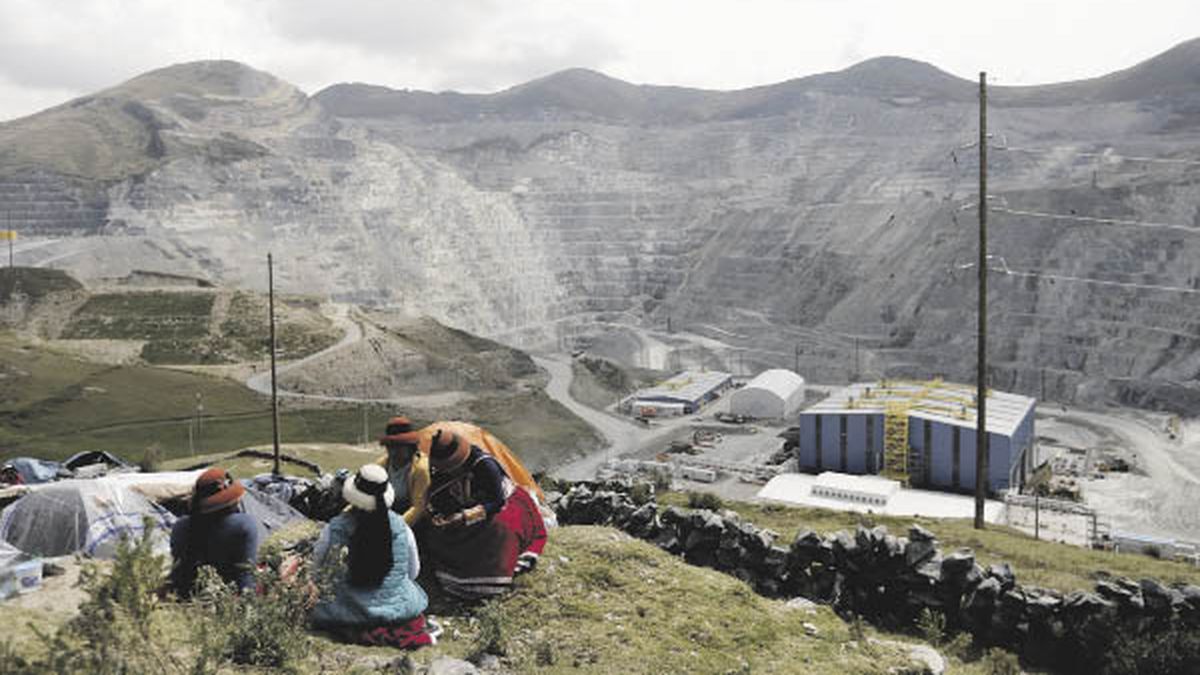The dialogue does not materialize and tension reigns in the area, in the Andean department of Apurímac, while it is estimated that due to the paralysis, 8.5 million dollars in copper exports are lost per day and the equivalent of 1.3 million in taxes and the like.
But Las Bambas is just one more of the social conflicts derived from mining. In fact, according to the Ombudsman’s Office, about 60% of the 209 conflicts currently registered have to do with this activity, which represents 10% of the country’s Gross Domestic Product (GDP), 20% of tax revenue and 60% of exports.
“Some have economic expectations, others have environmental concerns, others aspire to be part of the value chain, others to jobs,” José de Echave, former Vice Minister of the Environment and former leftist candidate for Vice President of Peru, said about citizen groups. faced by mining companies. But the reason that has undoubtedly activated the rebellion most strongly is that of the environmental liabilities derived from the extraction of minerals, which is manifested in the contamination of rivers, land and crops, and the consequent deterioration of the health of the inhabitants and their animals.
Peru is the world’s largest producer of tin and zinc, the second in copper and silver, the third in tellurium and bismuth, and the sixth in gold, and it occupies world leadership positions in indium, selenium, iron, and molybdenum. This explains why in the last 10 years they have reached up to 600,000 million dollars in investments for the sector.
But with money come problems: according to the Ministry of Health, in departments such as Amazonas, Cusco, Lambayeque, Madre de Dios, Moquegua, Pasco, Puno and Ucayali, more than half of the population is exposed to admission to their health agencies. heavy metals, metalloids and other toxic substances.
An investigation by the NGO Law, Environment and Natural Resources collected by the Convoca journalistic portal indicates that in 2019 there were 8,794 environmental liabilities derived from mining activity, to which they added another 3,457 generated by hydrocarbons.
In the department of Pasco and in the province of La Oroya -department of Junín-, where the most dramatic cases are, the percentage of the population with toxic substances in the body can reach 100%. In the Pasqueño district of Paragsha, continuous intoxication notoriously affects the IQ of children, according to an Italian NGO.
“The most common metals that poison the human body are arsenic, mercury and lead,” commented toxicologist Ricardo Puell. This presence generates damage to different organs, including the nervous system, skin, nails and hair.
“If a third of the country’s population is at risk of exposure, it is incredible that nothing has been done so far,” added another toxicologist, Fernando Osores, a former adviser to the Ministry of Health, for whom it is necessary to speed up the execution at least. of the budget allocated to the subject.
Although the Peruvian budget establishes that by 2022 up to 13.5 million dollars can be used for health issues derived from mining, Convoca established that the departmental governments are far from fulfilling the task. The most serious case is Cusco, where the execution of the budget almost halfway through the year barely reaches 2.3%.
For the secretary general of the National Platform for People Affected by Heavy Metals, Félix Suanaca, one of the biggest problems is that the authorities in charge “practically know nothing” about the dimensions of the problem.
“There is enough weakness in the Peruvian State; the neglect and snub that more than 10 million people are experiencing is causing the deaths of children,” warned Suanaca, who also warned that it is necessary to relocate agricultural areas due to the contamination of animals and crops.
All these scenarios have led the communities to react against the extractive industry in regions that, moreover, do not feel that the richness of their soil translates into better economic conditions.
For example, in Apurimac, in the midst of the gigantism of Las Bambas and its contribution of 2% to world copper production, 40% of the people are still below the poverty line.
In all this context, mining could cease to be the goose that lays the golden eggs. According to the president of the National Society of Mining, Petroleum and Energy, Raúl Jacob, the dynamic of some projects being replaced by others is being lost and currently there is only one large new project, Quellaveco, which is advancing in the midst of setbacks.
Jacob and another union leader, José Augusto Palma, agree that the mining companies are withdrawing from investing in Peru due to the conflict.
According to Palma, who assures that mining is able to work without damaging the environment, what the State must do to recover its attractiveness is to reduce conflicts and “rationalize” the demands on mining companies.
The latter poses a basic contradiction with the communities, who are asking for controls to be intensified so that the mining companies do no harm. In the middle is the State, often without initiative.
In Las Bambas, the conflict is not limited to the exploitation area but also includes neighboring territories that are said to be affected by the construction of routes, supposedly without technical support, to take the copper to the Pacific ports.
The Minister of Commerce, Roberto Sánchez, whom President Pedro Castillo entrusted with the dialogue, promises an agenda for MMG to fulfill the commitments made in 2014, when it bought the mine from the Swiss Xtrata. But the contacts are paralyzed, with an angry community and a company that has opted for repression. And if the Las Bambas problem is solved, dozens more will remain on the table for an activity that specialists have described for its environmental effects as “bread for today and hunger for tomorrow.”
Telam Agency
Source: Ambito
David William is a talented author who has made a name for himself in the world of writing. He is a professional author who writes on a wide range of topics, from general interest to opinion news. David is currently working as a writer at 24 hours worlds where he brings his unique perspective and in-depth research to his articles, making them both informative and engaging.




